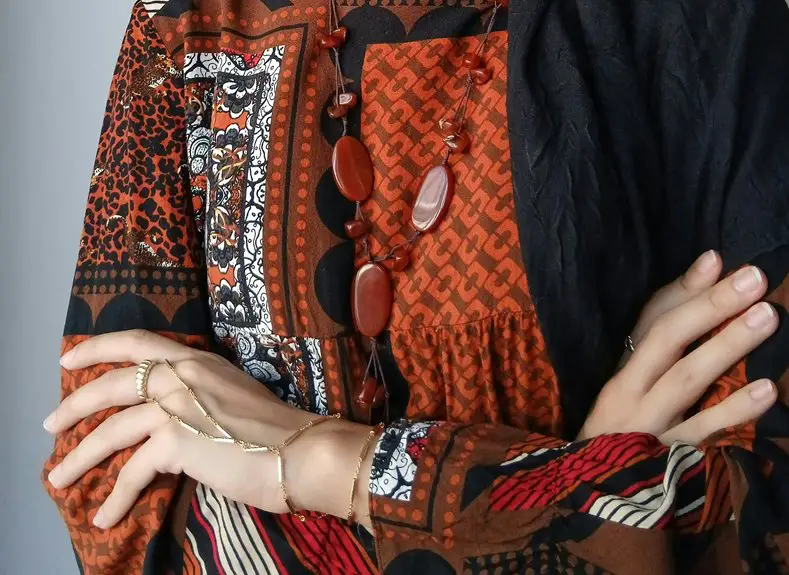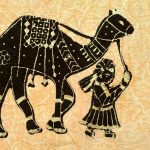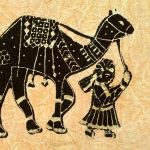If you’re tackling a crossword and need the clue for camel hair fabric, the definitive answer is often “camelhair.” This term directly references the soft, warm fabric originally made from the camel’s undercoat. It’s known for its luxurious feel and rich history, making it a favorite in fashion and puzzles alike. Understanding this fabric’s origins and variations can give you an edge with tricky clues, and there’s more fascinating detail to uncover about its uses and qualities.
Table of Contents
Key Takeaways
- The definitive crossword answer for camel hair fabric is often “Camelhair,” directly naming the fabric from camel fibers.
- Another common crossword answer is “Camlet,” a traditional fabric made from camel or goat hair.
- Clues may reference softness, warmth, or Central Asian origins to hint at camel hair fabric.
- Recognizing fabric types and adjectives like “soft,” “warm,” or “luxurious” can guide solving related clues.
- Understanding camel hair’s unique properties and historical context helps confirm the correct crossword solution.
Origins and History of Camel Hair Fabric
Although camel hair fabric has become popular in modern fashion, its origins trace back centuries to Central Asia, where nomadic tribes first used camel hair for warmth and durability.
You might find it fascinating that these tribes collected the soft undercoat shed by camels each spring, spinning it into yarn for clothing and blankets. This natural resource provided insulation against harsh climates while remaining breathable.
Over time, camel hair fabric evolved from a practical necessity into a symbol of luxury and craftsmanship, prized across various cultures.
Camel hair fabric transformed from essential warmth to a cherished emblem of luxury and skilled artistry worldwide.
When you wear camel hair today, you connect with a rich history of survival and ingenuity, blending ancient tradition with contemporary style.
Understanding this history helps you appreciate the fabric beyond its modern appeal.
Characteristics of Camel Hair Fabric
You’ll notice camel hair fabric feels incredibly soft and has a unique texture that sets it apart.
It keeps you warm with excellent insulation, perfect for cold weather.
Plus, it’s durable but requires some care to maintain its quality over time.
Softness and Texture
Softness defines camel hair fabric, making it a prized material for luxurious garments. When you touch it, you’ll notice a smooth, velvety feel that’s gentle against your skin.
Unlike rougher wools, camel hair offers a refined texture that feels cozy without irritation. Its natural fibers have a unique fineness, giving it that soft, plush quality you’ll love.
You’ll also appreciate how the fabric drapes elegantly, adding sophistication to any outfit. Here’s what makes the softness and texture stand out:
- Fine, silky fibers create a smooth surface
- Lightweight yet substantial feel
- Natural luster adds a subtle sheen
- Softness improves with wear and proper care
This fabric’s texture makes it a top choice for premium coats and scarves.
Warmth and Insulation
Warmth defines camel hair fabric as much as its softness does, making it a reliable choice for cold weather. When you wear camel hair, you benefit from its natural insulation properties. The fibers trap air, creating a barrier that keeps cold out and heat in.
This means you stay cozy without feeling bulky or weighed down. Unlike synthetic materials, camel hair adjusts to your body temperature, providing warmth without overheating. If you’re seeking a fabric that protects you from chilly winds and biting cold, camel hair fits the bill perfectly.
Its lightweight warmth lets you move comfortably while staying snug. Choosing camel hair means you don’t have to sacrifice comfort for insulation during the colder months.
Durability and Care
Although camel hair fabric feels delicate, it stands up well to regular use when cared for properly. You’ll find that handling it with care extends its life and keeps it looking great.
Unlike some fabrics, camel hair is naturally strong but can lose its softness if neglected. To maintain its durability, you should follow a few simple care tips.
- Avoid machine washing; opt for dry cleaning or gentle hand washing with cold water.
- Store your camel hair items in a cool, dry place to prevent damage from moisture.
- Use a soft brush to remove dirt and lint without damaging the fibers.
- Avoid direct sunlight for extended periods to prevent fading and weakening of the fabric.
With these steps, your camel hair fabric will remain both beautiful and durable.
Common Uses of Camel Hair Fabric
Camel hair fabric serves many practical purposes, making it a popular choice in your wardrobe and home.
You’ll often find it in outerwear like coats and jackets because it offers warmth without bulk. Its soft texture also makes it ideal for scarves and gloves, keeping you cozy during chilly days.
Beyond clothing, camel hair fabric works well for blankets and throws, adding a luxurious touch to your living space while providing comfort.
You can also spot it in upholstery and cushions, where its durability helps maintain a refined look over time.
When you choose camel hair fabric, you’re selecting a versatile material that blends functionality with comfort, making it valuable for various everyday uses.
Why Camel Hair Is Popular in Fashion
You’ll appreciate camel hair fabric for its unmatched softness and warmth, making it perfect for chilly days.
Its durability means your garments will last through many seasons without losing appeal.
Plus, the elegant texture adds a timeless, sophisticated touch to any outfit.
Softness and Warmth Benefits
Because it feels incredibly soft against your skin, camel hair fabric has become a favorite in the fashion world.
You’ll appreciate how its natural fibers trap heat, keeping you warm without feeling bulky. This fabric’s unique structure provides exceptional insulation, so you stay cozy during chilly days. Plus, camel hair is lightweight, making it comfortable to wear all day.
Here’s why you’ll love camel hair’s softness and warmth benefits:
- Gentle texture that reduces skin irritation
- Excellent heat retention without added weight
- Breathable fibers prevent overheating
- Natural moisture-wicking keeps you dry and comfortable
When you choose camel hair, you get a luxurious, warm fabric that feels as good as it looks.
Durability and Longevity
Beyond its soft feel and warmth, camel hair fabric stands out for its impressive durability and longevity. When you invest in camel hair, you’re choosing a material that resists wear and tear better than many other natural fibers.
Its strong, resilient fibers maintain their shape and structure even after repeated use and cleaning. You won’t have to worry about pilling or thinning, which means your camel hair garments stay looking fresh longer.
This durability makes camel hair perfect for coats and outerwear you rely on season after season. Plus, its natural resistance to wrinkles helps you keep a polished appearance with minimal effort.
Elegant Texture Appeal
While camel hair offers durability, its elegant texture truly sets it apart in fashion.
When you touch camel hair fabric, you instantly notice its soft, smooth feel that adds a luxurious touch to any garment. Its natural luster gives your outfit a subtle shine without appearing flashy.
You’ll also appreciate how lightweight yet warm it is, making it ideal for stylish winter wear. The fabric drapes beautifully, enhancing your silhouette with a refined finish.
Here’s why you’ll love camel hair’s texture:
- Softness rivals cashmere for comfort
- Natural sheen adds understated elegance
- Lightweight warmth suited for layering
- Smooth drape complements tailored designs
Choosing camel hair means you’re investing in both style and comfort.
Variations and Types of Camel Hair Fabric
Camel hair fabric comes in several variations, each offering unique qualities that suit different needs and styles. You’ll find it in its pure form, made solely from camel undercoat, prized for softness and warmth.
There’s also blended camel hair, combined with wool or synthetic fibers, which enhances durability and affordability without sacrificing much comfort. You might encounter different weights, from lightweight suiting fabric to heavier coats and blankets, letting you choose based on season or garment type.
Colors usually range from natural tan to deeper browns, but dyeing is possible for more variety. When selecting camel hair fabric, consider its intended use and care requirements, so you get the perfect balance between elegance, function, and longevity.
How Camel Hair Fabric Is Made
If you want to understand what makes camel hair fabric so special, start by looking at how the fibers are collected and processed.
You begin by gathering the soft undercoat hair, usually during the camel’s natural shedding season. This undercoat is what gives the fabric its warmth and softness.
Then, the fibers are carefully separated from the coarse outer hair to guarantee quality.
After cleaning and sorting, the fibers are spun into yarn.
Finally, the yarn is woven or knitted into fabric, ready to be turned into luxurious garments.
- Collect soft undercoat during shedding season
- Separate fine fibers from coarse outer hair
- Clean and sort fibers for quality
- Spin fibers into yarn and weave fabric
Common Crossword Answers for Camel Hair Fabric
When you encounter a crossword clue about camel hair fabric, the answer is often “camelhair” or simply “camlet.” These are the most common solutions because they directly reference the fabric made from camel hair.
“Camelhair” is straightforward, while “camlet” is a traditional term for a fabric originally woven from camel or goat hair. Occasionally, you might see answers like “wool” or “hair,” but these are less specific and less frequent.
If the clue hints at a luxurious or warm fabric, “camelhair” is usually your best bet. Remember, crossword puzzles favor concise answers, so look for these familiar terms when facing camel hair fabric clues.
Knowing these options will speed up your solving process and boost your confidence.
Tips for Solving Fabric-Related Crossword Clues
Fabric-related crossword clues often test your knowledge of materials, textures, and historical terms. When you encounter these clues, you need to think beyond common fabrics and consider lesser-known or vintage terms. Don’t hesitate to rely on your general knowledge of textiles and their origins.
Here are some tips to help you solve fabric-related clues efficiently:
- Familiarize yourself with popular fabric types like wool, silk, linen, and camel hair.
- Pay attention to clue wording; adjectives like “soft” or “coarse” can hint at texture.
- Use crossing letters to narrow down possibilities based on fabric length and letter placement.
- Keep in mind that some clues reference fabric uses or cultural origins, not just the material itself.
Frequently Asked Questions
Can Camel Hair Fabric Be Dyed Different Colors?
Did you know 70% of camel hair retains dye well? You can definitely dye camel hair fabric different colors, but it takes gentle dyes and care to keep its softness and natural insulating properties intact.
Is Camel Hair Fabric Hypoallergenic?
You’ll find camel hair fabric is generally hypoallergenic because it’s natural and less likely to irritate sensitive skin. However, if you’re allergic to animal fibers, you might still experience reactions, so test it first.
How Does Camel Hair Fabric Compare to Cashmere?
You’ll find camel hair fabric is warmer and coarser than cashmere, which feels softer and more luxurious. Both offer excellent insulation, but cashmere’s finer fibers make it more delicate and expensive compared to durable camel hair.
What Is the Care Instruction for Camel Hair Garments?
Did you know camel hair fibers are twice as insulating as sheep’s wool? You should dry clean camel hair garments to maintain softness, avoid machine washing, and store them in breathable bags to prevent moth damage.
Are There Ethical Concerns With Sourcing Camel Hair?
Yes, you should consider ethical concerns when sourcing camel hair. Some suppliers may not guarantee humane treatment or sustainable practices, so it’s wise to research and choose brands committed to animal welfare and environmental responsibility.
- Does Chiffon Fabric Stink - July 15, 2025
- Does Chiffon Fabric Affect the Economy - July 15, 2025
- Does Cotton Fabric Have a Nap - July 15, 2025







